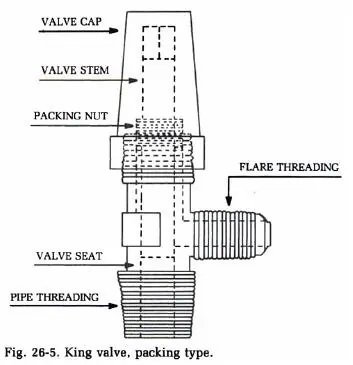Receiver Basics

The receiver is also often called a “liquid receiver,” and you will see it on everything from small self-contained refrigeration units to very large commercial and industrial systems.
Many new techs who are used to residential air conditioning confuse receivers with accumulators. While an accumulator is located in the suction line before the compressor and prevents liquid from entering the compressor, a receiver is located in the liquid line after the condenser and stores liquid refrigerant.
The liquid receiver stores refrigerant when the system is operating at less than maximum heat load. It is generally designed so that the receiver can hold all of the system charges and still be no more than 80% full. The design allows you to pump down the entire system charge into the receiver without the danger of creating hydrostatic pressure (very high pressures resulting from full liquid expansion).

The multi-position service valve at the outlet of the receiver is called a “King valve.” It can be used for refrigerant circuit access, and it may be fully front seated (turned clockwise) for pump down.
Because a receiver has both liquid and vapor present inside, many techs argue that the refrigerant cannot be “subcooled” in the receiver. The truth is that while the refrigerant that interacts between the liquid and vapor at the top of the receiver is at saturation, the refrigerant below the liquid line can be and usually will and should be subcooled.
—Bryan







